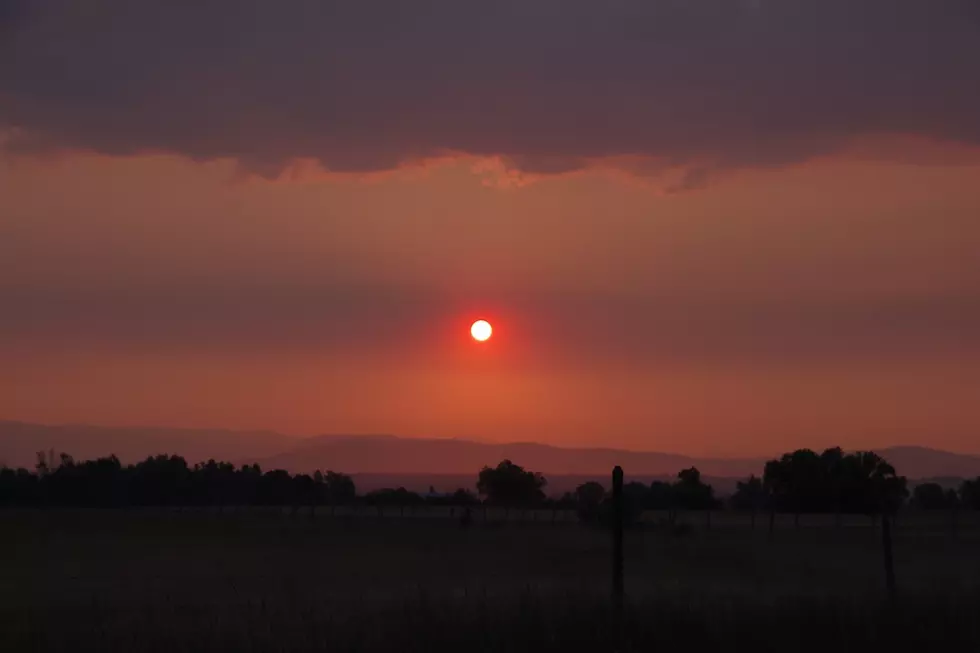
Experts warn of uptick in Montana wildfires in coming months
A cooler than normal winter that delayed snowmelt combined with heavy precipitation this spring has temporarily decreased the drought severity and wildfire conditions in Montana — but experts say with warming temperatures, that temporary relief will fade.
“Even with these conditions, our firefighting resources have already begun responding to wildfire starts and are preparing for above-average wildfire activity in the coming months with the summer heat showing up,” said Matthew Hall, fire protection bureau chief for the Montana Department of Natural Resources and Conservation’s Forestry Division.
Despite the increased precipitation this year, Montana has been experiencing significant drought for more than two years, and this year’s rain will not be enough to make up for the drought deficits of past years, experts told the interim Water Policy Committee on Monday.
“Because of these long-term conditions, drought conditions are likely to persist. And importantly, I would venture a guess that they have the potential to expand this summer,” said Kelsey Jensco, a state climatologist at the University of Montana.
Jensco told the committee that heavy precipitation over the last month has helped replenish water deficits that have contributed to the drought conditions.
Going forward, he said temperature outlooks in central and eastern Montana are skewing above average, while the outlook for the northwestern portion of the state is mostly uncertain.
“This could have impacts in terms of atmospheric demand for moisture, evaporative loss of soil moisture, and a more rapid dry down in the central and eastern portions of the state,” he said about the temperature outlook for central and eastern Montana.
But he said that based on an analysis of soil moisture and groundwater deficits from the Montana Bureau of Mines and Geology, conditions could worsen in Montana because it has been so dry for so long.
“I would actually suggest that we might see the expansion of drought from July into August in many more areas, including south central Montana and eastern Montana,” he said.
And these conditions will impact the state of wildfires in the coming months.
“As we move into August, as temperatures increase, they are predicting significant fire potential in central and south central Montana. And that holds again in September as well,” he told the committee.
While the recent precipitation will likely reduce the severity of drought, Jensco said there are still significant deficits deeper in the state’s soil profiles.
“At depth, our soil moisture is much, much less than previous years’ observations, even the 2021 drought in most cases. And so this suggests that we don’t have that reserve or storage deeper in our soils,” Jensco said. “And really, I’d highlight that this makes us vulnerable. Many locations across the state are still vulnerable to drought development, as we see the intensification of temperature and drying down in terms of precipitation.”
Hall, with the DNRC, said nationally, most of the wildfire activity is in Alaska, which is on preparedness level five — compared to two in Montana and one in the Northern Rockies region.
So far this year, he said there have been 581 wildland fires in the state that have burned 4,435 acres. At this time last year, Hall said there had been 1,463 wildland fires that burned 337,863 acres.
And he said the Wilkes Gulch fire, which has burned 355 acres, is the only active large wildfire in the state and is expected to be contained Tuesday.
The state expects to spend around $50 million on fighting wildfires this year — around double the 10-year average of $26.6 million, Hall said.
Like Jensco, Hall warned that upcoming higher temperatures will lead to an increase in fire activity.
“This has us anticipating an increase in fire danger across the state. Right now we’re seeing a lot of moderate fire danger in the state, but in the coming days and weeks, we’re going to see that move to high and very high, depending on the dry and warming trend that we get here in the next few weeks,” he said.
Hall closed by encouraging Montanans to be hyper-aware of fire conditions and prevention, noting that 80 percent of wildland fires in the state are human-caused.
“I’d like to ask you for your help emphasizing to residents and visitors the importance of being mindful in their activities at home … we all share the responsibility of preventing wildfires starts to stay informed on fire conditions and restrictions and to take actions to help our communities stay safe,” he told the committee.
More information about wildfire conditions can be found at mtfireinfo.org
